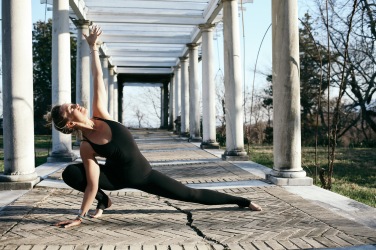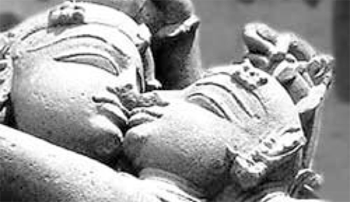Two big questions that most human beings will ponder at some point in their lives: “Who am I?” and “How can I get more of what I want in my life?”
Some of us may even ask ask them on a daily basis.
One of the things I love about the Tantric yoga tradition is its systematic approach to answering both of these inquiries. The Taittiriya Upanishad, one of the most important yogic scriptures, says that if we really want to know who we are, and get more joy and fulfillment in life, we gotta get to know our subtle anatomy.
Why? Because we are, according to Tantric anatomy, not one, but a composite of five bodies (pancha koshas): the physical body, the energetic body, the mental/emotional body, the inner-teacher or wisdom body, and the bliss body. When we can bring awareness into the deep layers of each of these bodies, we gain access to our highest, most evolved, powerful Self.
Body Mapping
Each of these bodies comes with their own limitations, access points, and super-powers. The more we know about each one of them, and the more familiar we get in their unique flavors, the more we have a relationship to them. And when we can relate them as as layers of who we are, the more they begin to show us their hidden contents.
The teachings go on to explain that what is hidden in these bodies is both our unconscious negative patterning, as well as our greatest gifts and powers. When the patterns that are hidden in the bodies emerge, we are no longer under the pull of the unconscious stuff. We can now get more of what we truly want as we bring the limitations and the latent capacities of the unconscious to the surface. In the end, when we penetrate the last layer of who we are, we are left with an endless power to create, act, and know.
Access Points
The physical. Many activities invite us into the physical body. Asana, for example, is an excellent way to tune in. We can feel our bones and they way they stack on top of each when we come into a Plank Pose. What happens to the tops of your thighs when you do Warrior 1 for long enough? Perhaps a burning sensation or a “shaking with joy.” Dancing will also bring you into the physical. So will a big meal, strong pain, sex, or a sunburn.
The energetic. Commonly referred to as the prana body, this can be felt when we keep the physical body still. We experience prana, according to the teachings, as subtle moving sensations like vibration and pulse, or we see it when we close our eyes as color or light. We can also experience prana as the impulse that pulls breath into the body (without us trying at all), and the force that causes air to leave again. This is one of the reasons the yogis encouraged such a strong connection to the breath. Prana also rides along the many intelligent processes in the body: the heart beat, the circulation of blood, and the capacity of our sensory organs.
The mental/emotional. This is where many of us spend a lot of time. It’s the part of us that thinks, plans, decides, emotes, and reacts. Its also the part of us that over-thinks, obsessively plans, sits in indecision, represses emotion instead of channeling it, and overreacts. Meditation is a wonderful way to access this body in a balanced and helpful way. Simply sitting and watching your thoughts, opinions, and judgements with a sense of detachment can give you more access to witnessing (and being less identified by the pulls of) this body.
The inner teacher. This is also often called the Wisdom Body. We can think of it as the highest aspect of our intuition and conscience. It’s the part of you that urges you out of bed to meditate or go for a run when you’d much rather lounge in the sheets checking Facebook. It’s the part of us that always knows the right path to take. Just like we would lift weights to make the physical body strong, we strengthen this body by sitting in silence, and sharpening our ability to hear the voice of our soul. When this body is strong, our daily actions become giant steps forward in the direction of our highest life purpose, our calling, our big destiny. We move from a place of knowingness instead of reaction.
The bliss. It’s pretty amazing that the subtlest aspect of who we are, at the core of all the other bodies, is referred to as an ocean of unending waves of bliss. Ironically, we access this body by actually dis-identifying with everything. To practice being in your bliss body, you can try the Tantric practice of neti neti, a word meaning “not this, not that.” In a meditative seat, notice what arises in your field of awareness. A thought about your job pops up and you say/acknowledge, “I’m not that.” You feel your low back ache a little, same thing: “I’m not that.” You feel your desire for more intimate love, “I’m not that.” A hunger pang arises, “I’m not this.” You sense light in front of your forehead, “I’m not that.” You may even feel, for a split second, the bliss. And in that moment, remember, “I’m not even that.” The more you keep surrendering into non-identification, the more, the teachings promise, the bliss can flow.
~Katie
This article was originally published on the Yoga Journal Blog on June 25, 2012.





 Founder of Jivamukti Yoga, Sharon Gannon’s
Founder of Jivamukti Yoga, Sharon Gannon’s 